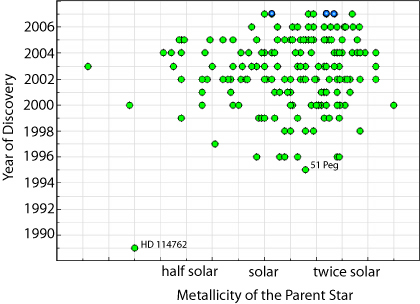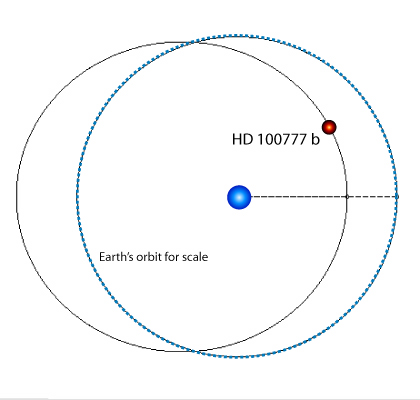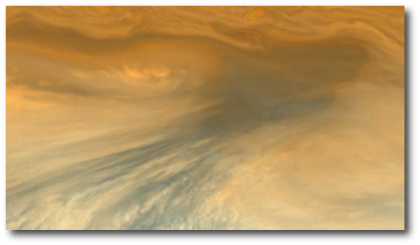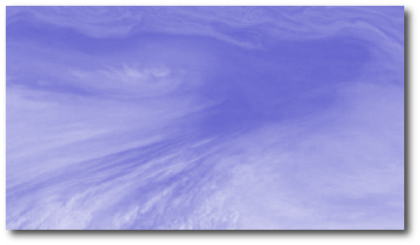
Image Source.
The year 2007 is off to a reasonably good start. Three more planets were announced by the Geneva Planet Search team at a conference in Chile, bringing the total planet crop for ’07 up to seven.
The rate of planet discovery, however, has definitely leveled off. For the past four years, the detection rate has remained fixed at 26 new planets per year. The low-hanging fruit — the 51 Pegs, the 47 Ursae Majorii, the Upsilon Andromedaes — have all been harvested from the bright nearby stars, and increasingly extractive methods are being brought to bear. Transits are starting to contribute significantly to the overall detection rate. Radial velocity is pushing to planets with progressively lower masses. Surveys such as N2K are rapidly screening metal-rich stars that have high a-priori probabilities for harboring readily detectable planets. The neccessity of finding more planets is driving up the average metallicity of the known planet-bearing stars:

The three new planets, HD 100777b, HD 190647b, and HD 221287b are quite ordinary as far as extrasolar planets go. They all have masses somewhat greater than Jupiter, and they all take more than a year to orbit their parent stars. Their discovery seems not to have registered with the news media:

HD 100777 b, however, is actually deserving of some attention. Its orbital period of 383.7 days places it squarely in the habitable zone of its parent star. The eccentricity, e=0.36, is fairly high, and likely leads to interesting seasonal effects in the atmosphere of the planet.

HD 100777 b lies a regime where we expect to see white water clouds forming in the visible atmosphere. The planet is probably very reflective in the optical region of the spectrum (quite unlike the hot Jupiters, which are likely cloud-free, and which are known to absorb almost all of the starlight that strikes them). Convection of interior heat to the surface of HD 100777b is almost certainly driving collossal thunderstorms, and the atmospheric disturbances created by the thunderstorms likely feed giant vortical storms similar to Jupiter’s great red spot.
It’s also possible that the atmosphere is much clearer in regions where air wrung dry by rainfall is downwelling. This phenomenon occurs on Jupiter, where highly transparent patches occur over several percent of the Jovian surface:

Image Source.
The Galileo entry probe went right into one of these regions, and sampled very dry air. On HD 100777, the regions of high atmospheric transparency will probably preferentially absorb red and green light (as a result of Rayleigh scattering of incoming photons). The surface, then, in the vicinity of a downwelling region may look something like this:


As far as I’ve been able to make out, all three of those planets lie in the habitable zones of their stars, at least when you use the semimajor axis.
What kind of eccentricity would give a temperature difference comparable to the seasonal temperature variations in the temperate latitudes on Earth?
Might the leveling off also have to do with the availability of telescope time. Radial velocity searches appear to be particular time hogs.
This year will almost certainly see a huge spike in planet detections as the COROT mission bursts forth with candidate transit planets after April 2nd when the first science survey completes and the satellite about turns to prevent frying its optics.
As a suitably decent amount of time has passed I must request if there are further solutions to the Mass-Period Effect Diagram posted earlier. I have tried to read search amongst other literature but there is little or no mention of what could be causing this effect.
Hi Andy,
I performed a “back of the envelope” calculation assuming that the atmosphere of the Earth had no effect and that the temperature varies from 0 to 40 degrees C. With these assumptions, an eccentricity of around 0.1 will produce this variation. I “fudged” a few numbers and found that a range between 0.07 and 0.13 could produce this variation. How well the atmosphere (and the surface (solid and/or liquid)) absorbs and reradiates the incoming radiation from the star can have a dramatic effect on this (Venus is very much significantly hotter than expected because of
it’s atmosphere). The radiative properties of the atmosphere (and the surface) are determined by the total volume of material and by the material content. Also, if the amount of incoming radiation varies significantly as a planet revolves in its eccentric orbit, the atmosphere (and surface) may not immediately respond. As a result, under the right conditions, an Earth-mass planet with a semi-major axis of 1 AU and an eccentricity of say 0.3 around a solar mass star could remain habitable (and relatively comfortable) for the entire year (over at least some part of its surface). I do believe there is
an upper limit to the eccentricity for the planet to remain habitable (which should depend on the atmosphere).
Eugenio
Ah ok thanks for that. I came across something once which suggested that the eccentricity limit for habitability is somewhere above 0.7 – moons of 16 Cygni Bb could in principle be habitable, though eukaryotes would probably find it rather uncomfortable.